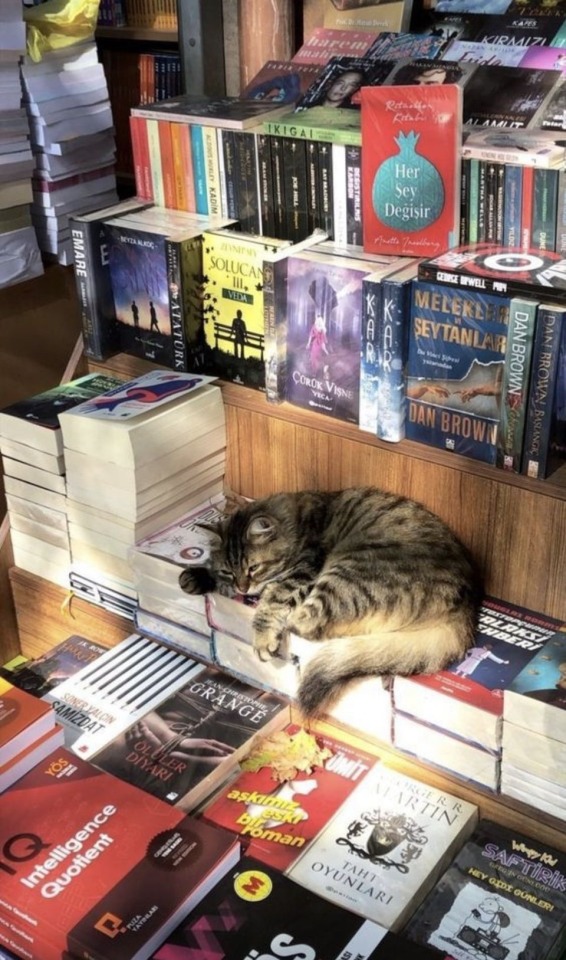#Books communication
Explore tagged Tumblr posts
Text
Доброго времени суток^^
Сегодня, конечно, будет краткий отзыв по данной книге, по которой вы узнали в названии. Желаю приятного чтения краткого отзыва^^
"Гни свою линию" я покупала в Fix-price. Я ради интереса решила прочитать. Очень маленькая по объёму книжка и можно меньше месяца прочитать, даже меньше недели.
И, к сожалению, я читала эту книгу за полгода в связи с учёбой :')
И, да, я забыла опубликовать эту книгу. Каюсь перед вами :')
Я только сегодня днем в черновиках увидела эту книгу 😓
В наше время общение - самая главная вещь, без которого не может существовать мир. Также общение важно в бизнесе, в выступлении каких-то важных конференций, в совещаниях и в других местах. Данная книга расскажет вам о общении, точнее - коммуникации. Здесь есть советы о том, как подготовиться к докладам, как в докладах не добавлять "воды", как вести себя в конфликтах, как переубедить человека, какие жесты могут применяться при общении, как манипулировать человека с помощью слов и другое. Также в книге есть множество примеров, тестов, задани��, схем, термин и рекомендаций, которые могут вам помочь.
Книга "Гни свою линию. Приемы эффективной коммуникации" написана простым языком, кратко и ясно. Каждый, фактически, поймёт о чем это книга.
10/10⭐

#книги#books & libraries#booksbooksbooks#literature#book blog#Гни свою линию#Никита Непряхин#Nepryahin#communication#Books communication
2 notes
·
View notes
Text
10 Non-Lethal Injuries to Add Pain to Your Writing
New Part: 10 Lethal Injury Ideas
If you need a simple way to make your characters feel pain, here are some ideas:
1. Sprained Ankle
A common injury that can severely limit mobility. This is useful because your characters will have to experience a mild struggle and adapt their plans to their new lack of mobiliy. Perfect to add tension to a chase scene.
2. Rib Contusion
A painful bruise on the ribs can make breathing difficult, helping you sneak in those ragged wheezes during a fight scene. Could also be used for something sport-related! It's impactful enough to leave a lingering pain but not enough to hinder their overall movement.
3. Concussions
This common brain injury can lead to confusion, dizziness, and mood swings, affecting a character’s judgment heavily. It can also cause mild amnesia.
I enjoy using concussions when you need another character to subtly take over the fight/scene, it's an easy way to switch POVs. You could also use it if you need a 'cute' recovery moment with A and B.
4. Fractured Finger
A broken finger can complicate tasks that require fine motor skills. This would be perfect for characters like artists, writers, etc. Or, a fighter who brushes it off as nothing till they try to throw a punch and are hit with pain.
5. Road Rash
Road rash is an abrasion caused by friction. Aka scraping skin. The raw, painful sting resulting from a fall can be a quick but effective way to add pain to your writing. Tip: it's great if you need a mild injury for a child.
6. Shoulder Dislocation
This injury can be excruciating and often leads to an inability to use one arm, forcing characters to confront their limitations while adding urgency to their situation. Good for torture scenes.
7. Deep Laceration
A deep laceration is a cut that requires stitches. As someone who got stitches as a kid, they really aren't that bad! A 2-3 inch wound (in length) provides just enough pain and blood to add that dramatic flair to your writing while not severely deterring your character.
This is also a great wound to look back on since it often scars. Note: the deeper and wider the cut the worse your character's condition. Don't give them a 5 inch deep gash and call that mild.
8. Burns
Whether from fire, chemicals, or hot surfaces, burns can cause intense suffering and lingering trauma. Like the previous injury, the lasting physical and emotional trauma of a burn is a great wound for characters to look back on.
If you want to explore writing burns, read here.
9. Pulled Muscle
This can create ongoing pain and restrict movement, offering a window to force your character to lean on another. Note: I personally use muscle related injuries when I want to focus more on the pain and sprains to focus on a lack of mobility.
10. Tendonitis
Inflammation of a tendon can cause chronic pain and limit a character's ability to perform tasks they usually take for granted. When exploring tendonitis make sure you research well as this can easily turn into a more severe injury.
This is a quick, brief list of ideas to provide writers inspiration. Since it is a shorter blog, I have not covered the injuries in detail. This is inspiration, not a thorough guide. Happy writing! :)
Looking For More Writing Tips And Tricks?
Check out the rest of Quillology with Haya; a blog dedicated to writing and publishing tips for authors!
Instagram Tiktok
#hayatheauthor#haya's book blog#haya blogs#writing community#quillology with haya#writing tools#writer things#writing advice#writer community#writing techniques#writing prompt#writing stuff#creative writing#ya writing advice#writing tips and tricks#writer tools#writers of tumblr#writer blog#writers block#quillology with haya sameer#writers on tumblr#writerscommunity#writer stuff#author help#author advice#author#writing inspiration#writeblr#novel writing#on writing
53K notes
·
View notes
Text

#right wing bullshit#lgbtq#lgbtq community#lgbt pride#sapphic#nonbinary lesbian#gay girls#lesbian#nonbinary#lgbtqia#right wing terrorism#right wing extremism#right wing politics#right wing women#conservatives#conservatism#queer#spiderman#spiderman comics#spiderman fanart#spidey#peter parker#mary jane watson#spidypool#comic books#comics#comic art#original comic#fan comic#web comic
50K notes
·
View notes
Text
I know adverbs are controversial, but "said softly" means something different than "whispered" and this is the hill I will die on.
#books#writing#writersnetwork#writers#writers on tumblr#writing community#author#writerscommunity#writers life#creative writing#writer#writers of tumblr#adverbs
58K notes
·
View notes
Text
Katniss is such an unreliable narrator. She says "Then something unexpected happens. At least, I don't expect it because I don't think of District 12 as a place that cares about me" girl you deliver strawberries to the Mayor, you hunt and trade for the district, when you fell at Prim being chosen someone caught you, when you went to Prim people parted for you, when you volunteered EVERYONE stopped. Idk how to tell you but I think you're a pillar of the community.
#katniss everdeen#the hunger games trilogy#the hunger games#primrose everdeen#hunger games#batcavescolony reads the hunger games#suzanne collins#'now it seems i have become someone precious' NOW? GIRL BFFR you're their hunter girl#and this isn't negative just bffr girl#your WHOLE DISTRICT did the three finger salute that you yourself says means admiration thanks and goodbye to someone you love and on top is#old a rarely used. your WHOLE DISTRICT decided in that moment that they needed to bring back this sign of respect for YOU#...................................................................#idk why some people are thinking i mean this as negative i don't she is unreliable but its not intentional. like when Peeta heart stoped in#CF she doesn't know what Finnick is doing at first cus she doesn't know off the top of her head what cpr is. she also thinks Peeta after the#reaping is acting for the cameras. he isnt we dind out later his mom basically told him Katniss was gonna win and he would die. obviously#shes not doing it on purpose shes just for lack of better words uneducated? as in she doesn't know everything shes not omnipotent#so when Plutarch (? second games guy) shows her his mokingjay hiden watch shes like *wtf that's weird?* then the people traveling to#district 13 show her the mockingjay cookie and explains it and she then goes on the difference between his watch and their cookie#and why does eveyone act as if district 12 is as bad as the capital? they CANT help Katniss and Prim in the way you want. they cant give#them food. none of them have any! and im not putting iton Katniss but they hid they needed food so they could stay together. it sounds like#some of you are in this our world mentally of what people do after a loved one dies (brings food constantly checks on them etc) district 12#cant do that. they dont have food and they're all suffering. you cant give someone food when you have none to give. then theirs the fact#that peeta DID help. Peeta buring the bread and tossing some to her then taking a beating from his mom is a HUGE thing in the books.#he used his resources to help her like you all said someone should.#district 12 DID (rip) care about Katniss before the hunger games. why do you think she was allowed to hunt? or how her trades were good#these are the little ways 12 can shows Katniss they love her. but again Katniss doesn't see this and YES its because she had ptsd before the#hunger games as well. i swear some of you make it seem like d12 was all living a life of luxury and glaring down at Katniss.#other things that show Katniss is in hight standing with at least her people of d12 is her dad was known enough through d12 for peeta dad to#comment on his singing along with his commenting on her mom. also her mom is a healer in the community. yeah her parents arnt the top but#of d12 but they are/were definitely high staning in the Seam.
32K notes
·
View notes
Text

there is a love in which i will always know you, just incase you forget.
love elizabeth s.
#original poem#original quote#poetry#writeblr#love elizabeth s#my poem#short poem#quotes#books#dark acadamia quotes#love poems#love poem#love quote#love#love letter#romance#poem#poems and poetry#daily poem#word gasm#dark academia quotes#aesthetic#dead poets society#poetblr#writers community#writers of tumblr#poets on tumblr#writers on tumblr
16K notes
·
View notes
Text




cats and libraries ۫ ꣑ৎ
#book#reading#booklr#books and reading#book review#bookworm#bookish#book photography#bibliophile#book blog#currently reading#book club#library#book lover#bookstore#books to read#book tumblr#book aesthetic#book community#books books books#bookshelves#bookshelf#bookstagram#books & libraries#books and literature#pinterest#source: pinterest#cats#cats of tumblr#catsoftheworld
9K notes
·
View notes
Text
How to avoid White Room Syndrome
by Writerthreads on Instagram
A common problem writers face is "white room syndrome"—when scenes feel like they’re happening in an empty white room. To avoid this, it's important to describe settings in a way that makes them feel real and alive, without overloading readers with too much detail. Here are a few tips below to help!
Focus on a few key details
You don’t need to describe everything in the scene—just pick a couple of specific, memorable details to bring the setting to life. Maybe it’s the creaky floorboards in an old house, the musty smell of a forgotten attic, or the soft hum of a refrigerator in a small kitchen. These little details help anchor the scene and give readers something to picture, without dragging the action with heaps of descriptions.
Engage the senses
Instead of just focusing on what characters can see, try to incorporate all five senses—what do they hear, smell, feel, or even taste? Describe the smell of fresh bread from a nearby bakery, or the damp chill of a foggy morning. This adds a lot of depth and make the location feel more real and imaginable.
Mix descriptions with actions
Have characters interact with the environment. How do your characters move through the space? Are they brushing their hands over a dusty bookshelf, shuffling through fallen leaves, or squeezing through a crowded subway car? Instead of dumping a paragraph of description, mix it in with the action or dialogue.
Use the setting to reflect a mood or theme
Sometimes, the setting can do more than just provide a backdrop—it can reinforce the mood of a scene or even reflect a theme in the story. A stormy night might enhance tension, while a warm, sunny day might highlight a moment of peace. The environment can add an extra layer to what’s happening symbolically.
Here's an example of writing a description that hopefully feels alive and realistic, without dragging the action:
The bookstore was tucked between two brick buildings, its faded sign creaking with every gust of wind. Inside, the air was thick with the scent of worn paper and dust, mingling with the faint aroma of freshly brewed coffee from a corner café down the street. The wooden floorboards groaned as Ella wandered between the shelves, her fingertips brushing the spines of forgotten novels. Somewhere in the back, the soft sound of jazz crackled from an ancient radio.
Hope these tips help in your writing!
#writing#writing inspiration#writing tips#writers on tumblr#writing advice#creative writing#teen writer#writers block#writeblr#writers#on writing#writer#writerscommunity#writers of tumblr#writing community#novel writing#book writing#fiction
11K notes
·
View notes
Text
“how do you plot / plan your book?” very bold of you to assume i do that.
#i literally just make it up as i go!!#oh what happens next? I DON’T KNOW!!#writing#writer#creative writing#teen writer#author#writers on tumblr#story writing#author things#writeblr#writer stuff#book writing#bookblr#writing advice#writing prompt#on writing#writers#writer things#writers and poets#writerscommunity#writblr#female writers#author blog#author post#writing community#writing is my therapy#writing blog#writer problems#writing on tumblr
9K notes
·
View notes
Text
Other Words for "Look" + With meanings | List for writers
Many people create lists of synonyms for the word 'said,' but what about the word 'look'? Here are some synonyms that I enjoy using in my writing, along with their meanings for your reference. While all these words relate to 'look,' they each carry distinct meanings and nuances, so I thought it would be helpful to provide meanings for each one.
Gaze - To look steadily and intently, especially in admiration or thought.
Glance - A brief or hurried look.
Peek - A quick and typically secretive look.
Peer - To look with difficulty or concentration.
Scan - To look over quickly but thoroughly.
Observe - To watch carefully and attentively.
Inspect - To look at closely in order to assess condition or quality.
Stare - To look fixedly or vacantly at someone or something.
Glimpse - To see or perceive briefly or partially.
Eye - To look or stare at intently.
Peruse - To read or examine something with great care.
Scrutinize - To examine or inspect closely and thoroughly.
Behold - To see or observe a thing or person, especially a remarkable one.
Witness - To see something happen, typically a significant event.
Spot - To see, notice, or recognize someone or something.
Contemplate - To look thoughtfully for a long time at.
Sight - To suddenly or unexpectedly see something or someone.
Ogle - To stare at in a lecherous manner.
Leer - To look or gaze in an unpleasant, malicious way.
Gawk - To stare openly and stupidly.
Gape - To stare with one's mouth open wide, in amazement.
Squint - To look with eyes partially closed.
Regard - To consider or think of in a specified way.
Admire - To regard with pleasure, wonder, and approval.
Skim - To look through quickly to gain superficial knowledge.
Reconnoiter - To make a military observation of a region.
Flick - To look or move the eyes quickly.
Rake - To look through something rapidly and unsystematically.
Glare - To look angrily or fiercely.
Peep - To look quickly and secretly through an opening.
Focus - To concentrate one's visual effort on.
Discover - To find or realize something not clear before.
Spot-check - To examine something briefly or at random.
Devour - To look over with eager enthusiasm.
Examine - To inspect in detail to determine condition.
Feast one's eyes - To look at something with great enjoyment.
Catch sight of - To suddenly or unexpectedly see.
Clap eyes on - To suddenly see someone or something.
Set eyes on - To look at, especially for the first time.
Take a dekko - Colloquial for taking a look.
Leer at - To look or gaze in a suggestive manner.
Rubberneck - To stare at something in a foolish way.
Make out - To manage to see or read with difficulty.
Lay eyes on - To see or look at.
Pore over - To look at or read something intently.
Ogle at - To look at in a lecherous or predatory way.
Pry - To look or inquire into something in a determined manner.
Dart - To look quickly or furtively.
Drink in - To look at with great enjoyment or fascination.
Bask in - To look at or enjoy something for a period of time.
#on writing#creative writing#writing#writing tips#writers block#how to write#thewriteadviceforwriters#writeblr#writers and poets#writers on tumblr#novel writing#fiction writing#romance writing#writing advice#writing blog#writing characters#writing community#writing help#writing ideas#writing inspiration#writing guide#writing prompts#writing a book#writing resources#writing reference#writing tips and tricks#writers#writing tools#writing life#writing software
6K notes
·
View notes
Text
Herb's Properties


Basil: money, luck, prosperity, happiness
Bay Leaf: energy, cleansing, can be charged with almost any intention
Camomile: Caring, kindness, luck, growth, self-love growth, confidence, avoiding negativity, happiness
Cinnamon: passion, quick success, fire magick
Chia seeds: Growth, health, kindness, Property
Chilli flakes: Pride, confidence, power, strength, Passion
Cumin: Courage, bravery, protection, loyalty
Dandelion: wishes, charisma, success, good luck
Dill: sexual love, luck, protection
Eucalyptus: cleansing, healing, purifying, relaxing, comfort
Fennel: hate, anger
Flax seeds: Prosperity, growth, new beginnings
Ginger: fiery passion, success, and personal power
Jasmine: love, dreams, sensuality, luxury and kindness
Lavender: love and attraction, purification, relaxation, restful sleep
Nutmeg: luck, Health, Fidelity, Love, Prosperity, comfort, loyalty
Oregano: comfort, love, warmth
Paprika: Pride, confidence, power, strength
Parsley: Cleansing. purification
Peppermint: healing, purification, love and energy, cleansing, prosperity
Poppy seeds: protection, intuition, self-assurance, hexing and cursing
Rose: love, beauty, harmony, romance, attraction
Rosemary: cleansing, purification, wisdom, protection
Sesame seeds: Prosperity, growth, health, nurturing
Spearmint: love, cleansing, renewal, blessing
Sunflower seeds: happiness, growth, joy
Thyme: beauty, strength, courage
Turmeric: confidence, creativity, energy
Vanilla: love and sexuality
tip jar
#thecupidwitch#witchcraft#witch community#witches#witchcore#witch#witchblr#green witch#grimoire#herbs#book of shadows#wicca#pegan#peganism#wiccablr#pagan wicca#wiccan#magic#ko fi support#baby witch#beginner witch#chaos witch#eclectic witch#folk witchcraft#hedge witch#kitchen witch#tarot witch#traditional witchcraft#witch aesthetic#plants and herbs
17K notes
·
View notes
Text
100 Dialogue Tags You Can Use Instead of “Said”
For the writers struggling to rid themselves of the classic ‘said’. Some are repeated in different categories since they fit multiple ones (but those are counted once so it adds up to 100 new words).
1. Neutral Tags
Straightforward and unobtrusive dialogue tags:
Added, Replied, Stated, Remarked, Responded, Observed, Acknowledged, Commented, Noted, Voiced, Expressed, Shared, Answered, Mentioned, Declared.
2. Questioning Tags
Curious, interrogative dialogue tags:
Asked, Queried, Wondered, Probed, Inquired, Requested, Pondered, Demanded, Challenged, Interjected, Investigated, Countered, Snapped, Pleaded, Insisted.
3. Emotive Tags
Emotional dialogue tags:
Exclaimed, Shouted, Sobbed, Whispered, Cried, Hissed, Gasped, Laughed, Screamed, Stammered, Wailed, Murmured, Snarled, Choked, Barked.
4. Descriptive Tags
Insightful, tonal dialogue tags:
Muttered, Mumbled, Yelled, Uttered, Roared, Bellowed, Drawled, Spoke, Shrieked, Boomed, Snapped, Groaned, Rasped, Purred, Croaked.
5. Action-Oriented Tags
Movement-based dialogue tags:
Announced, Admitted, Interrupted, Joked, Suggested, Offered, Explained, Repeated, Advised, Warned, Agreed, Confirmed, Ordered, Reassured, Stated.
6. Conflict Tags
Argumentative, defiant dialogue tags:
Argued, Snapped, Retorted, Rebuked, Disputed, Objected, Contested, Barked, Protested, Countered, Growled, Scoffed, Sneered, Challenged, Huffed.
7. Agreement Tags
Understanding, compliant dialogue tags:
Agreed, Assented, Nodded, Confirmed, Replied, Conceded, Acknowledged, Accepted, Affirmed, Yielded, Supported, Echoed, Consented, Promised, Concurred.
8. Disagreement Tags
Resistant, defiant dialogue tags:
Denied, Disagreed, Refused, Argued, Contradicted, Insisted, Protested, Objected, Rejected, Declined, Countered, Challenged, Snubbed, Dismissed, Rebuked.
9. Confused Tags
Hesitant, uncertain dialogue tags:
Stammered, Hesitated, Fumbled, Babbled, Mumbled, Faltered, Stumbled, Wondered, Pondered, Stuttered, Blurted, Doubted, Confessed, Vacillated.
10. Surprise Tags
Shock-inducing dialogue tags:
Gasped, Stunned, Exclaimed, Blurted, Wondered, Staggered, Marvelled, Breathed, Recoiled, Jumped, Yelped, Shrieked, Stammered.
Looking For More Writing Tips And Tricks?
Check out the rest of Quillology with Haya; a blog dedicated to writing and publishing tips for authors!
Instagram Tiktok
#hayatheauthor#haya's book blog#haya blogs#writing community#quillology with haya#writing tools#writer things#writing advice#writer community#writing techniques#writing prompt#writing stuff#creative writing#ya writing advice#writing tips and tricks#writer tools#writers of tumblr#writer blog#writers block#quillology with haya sameer#writers on tumblr#writerscommunity#writer stuff#author help#author advice#author#writing inspiration#writeblr#novel writing#on writing
21K notes
·
View notes
Text

#lgbtq community#lgbt pride#lesbian#lgbtqia#nonbinary#sapphic#lgbtq#queer#nonbinary lesbian#gay girls#wlw nsft#wlw books#wlw mood#wlw positivity#wlw yearning#lesbian pride#wlw community#wlw love
62K notes
·
View notes
Text
Writing Advice:
1. Write what's in your heart
2. Wait, hold up
3. THIS is what's in your heart?
4. Dear god
5. Your poor characters.
6. Why is there so much blood and death?
#writing advice#books#writing#writersnetwork#writers#writers on tumblr#writing community#author#writerscommunity#writers life#tumblr writing community#writer problems#writer things#writers of tumblr#writer#writing process
12K notes
·
View notes
Text
Ideas to Show Secret Pining
"Why don't you join me?"
"I'll give you a ride, don't worry."
*does something they don't like* "What? I like it."
*immense staring at every chance they get*
*thinking of their crush while listening to songs*
"You said you liked it so I brought it for you."
*finds ways to spend more time with them*
*friendly bullying intensifies*
"I'm looking forward to seeing you there."
"Are you gonna be there?"
"How about we sneak off, just you and me?"
"Why don't I cook for them? What's their favourite dish again?"
*aggressive google searches about how to propose to your crush*
"I'll join those dance lessons, maybe then she'll notice me."
*hopeless around them*
*failed flirting attempts*
*increased compliments*
"My problem is that I like them a little too much for my sanity."
*gets jealous* "So, are you seeing them or something?"
"Are you okay?" // "Completely okay!" (definitely not okay)
*tries to sabotage their crush's date*
*gets into trouble so they can be scolded by their crush*
"I want you to come with me, please?"
-ashlee
#writers on tumblr#writerscommunity#writing#books#writer#write#writingtips#creative writing#tips and tricks#fanfic writing#writings#writing ideas#writing prompts#on writing#writeblr#writing life#writing tips#writers#prompts#writing inspiration#writing prompt#story prompts#story ideas#writing advice#writing community#writing tools#writingideas#dialogues#drabbles#dialogue ideas
7K notes
·
View notes